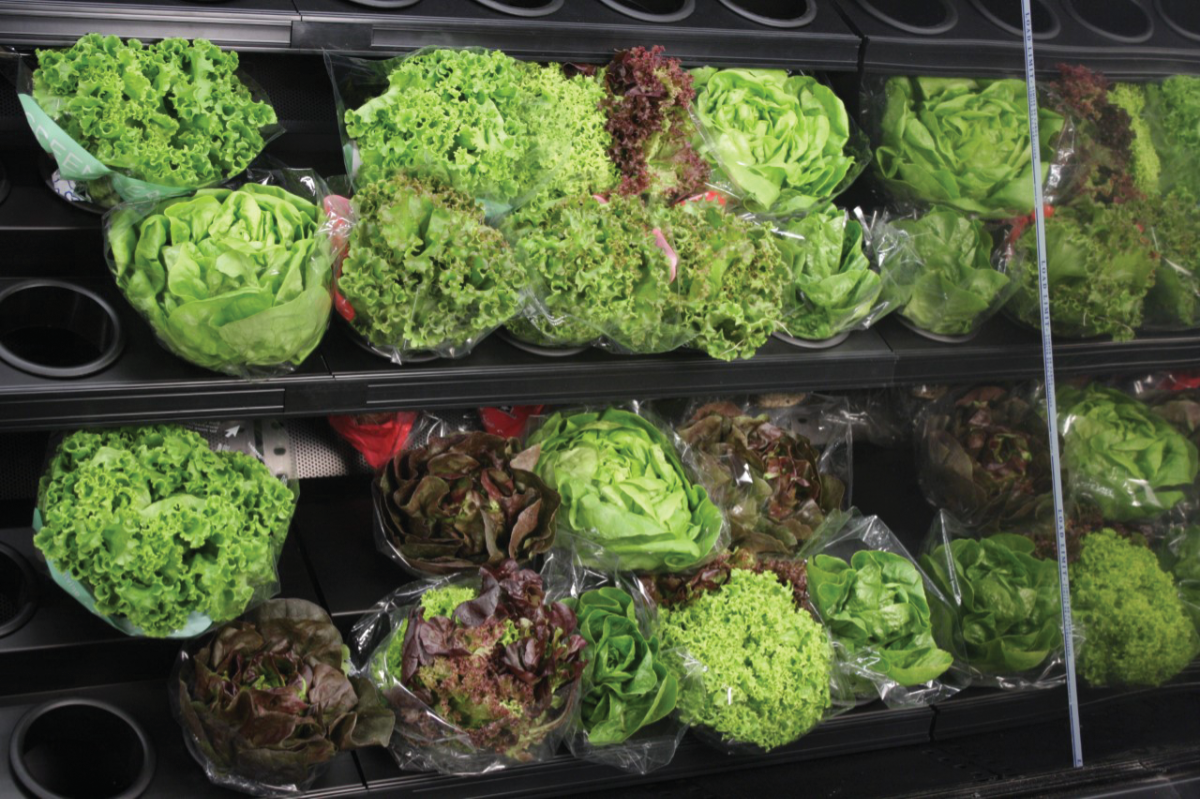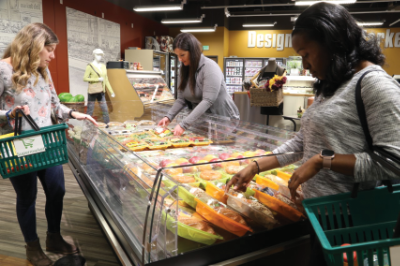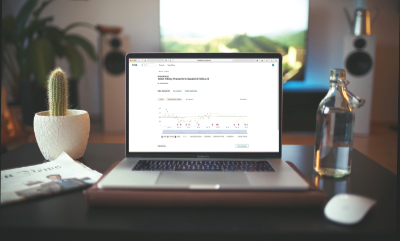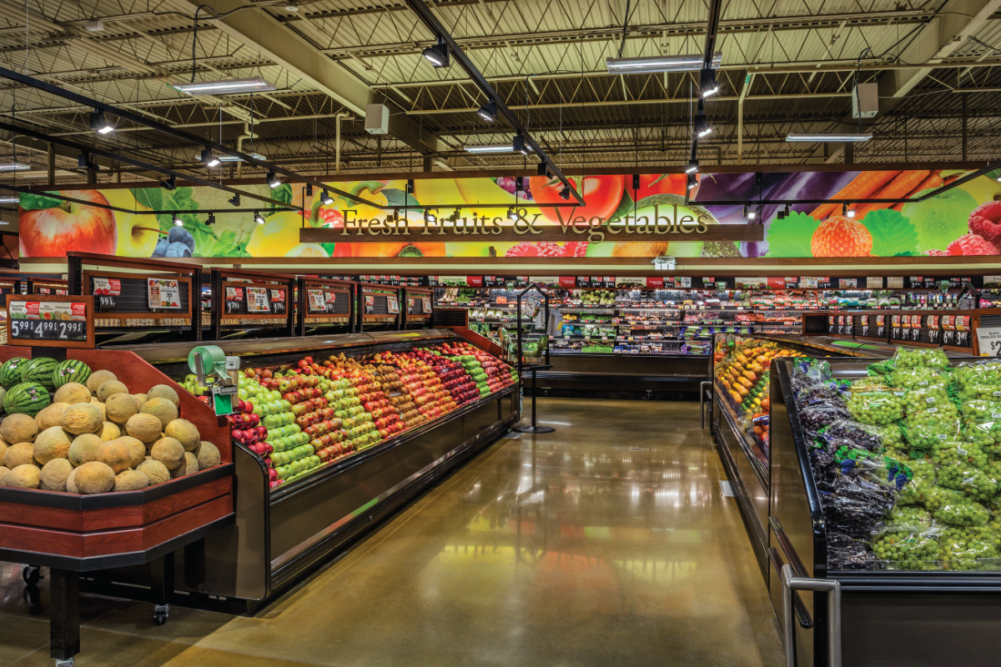KANSAS CITY, MO. - Regardless of how you define it, sustainability’s importance to the 21st century food industry cannot be overestimated. And all along the supply chain, companies and organizations are working harder than ever to find solutions to meet their clients’ and their own sustainability goals.
When food is wasted, all of the natural resources used to produce that item are also wasted: freshwater, fuel, energy needed to store product, and energy to cool product in grocery stores.
Minneapolis-based Carlson AirFlo Merchandising Systems is committed to reducing that waste and helping its retail clients improve their sustainability records, said Suellen Lindsay, the company’s marketing manager.
AirFlo provides aluminum merchandising shelving and racking equipment for perimeter fresh departments that’s designed to maximize cold air flow around products, resulting in harvested product living longer in the retail setting. That means a fresher product for the end customer.
“The ultimate goal is to provide the maximum amount of product for the world with the minimal environmental impact,” Lindsay said. “AirFlo strives to be on the cutting edge of innovation and new products, helping our partners drive their sustainability efforts in the marketplace.”
AirFlo’s role as a manufacturer of merchandising equipment is to give its retail partners the ability to provide the freshest, longest lasting product for their customers, Lindsay said.
Some of the company’s best product ideas, she said, come from grocery retailers that have a need, or an idea to provide a better impact on their daily work life, or improve their customer’s shopping experience.
AirFlo’s Premier Pull Out Bin, for example, provides better food safety by enclosing the product inside from the environment, while increasing shelf life by one or two days over normal conditions, thus reducing shrink. AirFlo’s 4 in Sprouts Bin was built to capture cold air and recirculate it within the bin, creating a safer environment for the sprouts product being merchandised.

AirFlo has also been challenged by both retailers and growers to provide merchandising displays for living lettuces, Lindsay said. The company has provided solutions in both vertical refrigerated cases and stand-alone merchandising units outside the refrigerated case. AirFlo’s Hydroponics display solutions for refrigerated cases are designed to enhance food safety by helping to contain the refrigerated air around product.
“It enables the retailer to better control and maintain misting to the bulb root area while protecting leafy green areas,” Lindsay said.
In addition, AirFlo’s complete line of anodized aluminum shelving, racking and base products — perforated for drainage of misting, cleanliness and increased air flow — help manage inventory levels and turnover, making it easier to rotate product, resulting in lower food waste, she added.
Let there be light — efficiently
All LED lighting products made by Oakland, N.J.-based Amerlux are an ideal fit for any sustainability program, said Bill Plageman, the company’s vice president of marketing and product development.
“Energy savings and a longer lifespan are a given when talking about LEDs today,” Plageman said. “Amerlux helps the food industry by helping grocers meet their energy reduction goals and by delivering longer-lasting lighting products.”
Amerlux takes supermarket lighting a step further, he added, by delivering sustainable products without losing sight of the retailer’s goal, which is to sell more products.
“We do it by delivering bright, bold natural color rendition that makes perishable items such as produce and flowers look like they were just picked,” Plageman said. “We also remove heat from within the beam of the light, which increases the shelf life of the products lit.”
Sustainability has been a hot topic for some time, and LED lighting is nothing new. What has changed, though, Plageman said, is that the conversation today centers more on how Amerlux and other lighting companies can help deliver fresh color and longer shelf life in grocers’ high-profit areas with sustainable products.
Another thing that’s changed: in the past, the energy solution chosen sometimes outweighed the appearance of the products being lit, as well as the shoppers themselves. All, Plageman said, are equally important today.
“Sustainability has always been important, and I don't think it's any less important today,” he said. “Saving energy and purchasing the right products boost bottom lines by reducing energy expenditures and maintenance costs. It also showcases merchandise in the best light.”
That, he said, spurs impulse purchases and helps retailers boost their sales.
Amerlux is focused on delivering the right color rendering for the products being lit as well as delivering the best quality controls, which can generate an additional 15 to 20% in energy savings, Plageman said.
“Retailers shouldn't think of lighting as just lighting,” he added. “Today, it can deliver much more by swaying shoppers where to stroll, what to feel and how products look, all of which plays a major role in maximizing the profitability of specialty perimeter departments.”
Regulation-ready
Hillphoenix, a division of Conyers, Ga.-based Dover Food Retail, has a broad portfolio of products that can enhance a retailer’s sustainability programs, said Subodh Sharma, the company’s director of product management: systems, small format and self-contained.
“Hillphoenix is the leader in CO2 refrigeration system production and sales with the most installations in North America using CO2 as a natural refrigerant,” he said.

Two product offerings include Advansor Booster rack systems and a smaller distributed solution, AdvansorFlex, which is designed for use in smaller format stores or in a CO2 distributed solution. And more products are in the pipeline, Sharma added.
Hillphoenix also markets SoloChill, a micro-distributed water loop self-contained package that reduces total store refrigerant charge by over 75%, and meets stringent regulatory requirements (such as the upcoming California CARB regulations) that exempt systems with less than 50 lbs charge per circuit.
The company’s portfolio of sustainable products also includes display cases and specialty products, Sharma said. Hillphoenix’s recently introduced R-290 self-contained display case, model MIDA, provides food retailers with a sleek, attractive merchandiser that is also a low GWP solution.
When it comes to sustainability, each food retailer must define their specific sustainability programs based on their corporate strategy, in compliance with local regulations, which can vary significantly by retailer and the region in which they operate, Sharma said.
“We believe that food retailers should strive to achieve a low GWP or natural refrigerant store portfolio that will allow them to move to a future proof solution and prevent frequent and costly system upgrades or refrigerant retro-fits as regulations become more stringent,” he said.
As an example, Hillphoenix is currently working with a number of food retailers in California as they prepare for the upcoming CARB regulations that would limit the average GWP within their store to half the current level.
“With these retailers we are evaluating their current installed base are recommending product design solutions that would meet these requirements in the most cost-effective manner possible,” Sharma said.
That could be a mix of moving to C02 in new stores, using a micro-distributed SoloChill type product in others, or a move away from a centralized R22 solution to a distributed lower GWP R448A solution.
In 2007, Hillphoenix kicked off its sustainability initiatives by defining sustainability as the ability to achieve continuing economic prosperity while providing the best outcomes for both the human and natural environments both now and into the indefinite future. Today, sustainability for refrigeration equipment design is directly related to technology that reduces refrigerant charge, the carbon footprint due to GWP or reduces the energy consumption.
Regardless of the definition, Sharma said sustainability is more important than ever.
“Globally, we are seeing more stringent environmental regulations such as the F-Gas regulations in Europe, and closer to home with the upcoming California CARB regulations. Beyond California there is a growing consortium of states, the US Climate Alliance, that are closely following regulations in California and will likely implement variations of the CARB regulations in their states in the future.”
For a retailer, he added, staying with or ahead of this wave of regulations would prevent costly upgrades with intermediate solutions that will appeal to a growing climate-aware group of consumers for being environmentally responsible.
Coronavirus shines light on importance of forecasting
New York-based data forecasting company Crisp’s platform can be used by the retail grocery industry and its supplier partners to enhance sustainability programs.
With the coronavirus, it’s a technology that’s more important than ever, said Are Traasdahl, Crisp’s co-founder and CEO.
“The world’s supply chains are connected more than ever before. With the recent outbreak of COVID-19, Crisp has made European supermarket demand data available through the Crisp DemandWatch to help visualize the impact of the pandemic on supply and the follow-on effects that will be felt in the US market.”
It’s critically important, he added, that suppliers understand real demand of their product, so as not to overproduce in the long-term, while meeting short-term out of stock needs.
The Crisp platform is a cloud-based, software-as-a-service (SaaS) platform that gathers, organizes and analyzes trillions of signals from disparate sources using advanced computing power and analytics said Traasdahl.
The result is high-quality statistical demand forecasts and actionable insights.
“As food suppliers navigate the impact of the COVID-19 global pandemic, these insights are even more critical to help them manage their business,” he said.
Crisp leverages the latest in artificial intelligence, machine learning, and open source forecasting models to produce customized, best-fit demand forecasts for fresh, perishable, and packaged foods of all types, Traasdahl added.
Improved demand forecasting accuracy strengthens shopper and customer satisfaction, increases top-line revenue and bottom-line profit, and reduces waste. By leveraging the Crisp platform, grocery retailers and their supplier partners can reduce waste in support of their sustainability goals.
“We believe that food industry sustainability needs to be viewed holistically and includes multiple dimensions,” Traasdahl said. “We are strong believers that sustained change can only happen if there is also a financial benefit for our customers. And there is. Lost sales because of out-of-stock situations or waste due to over-stock means lost profit.”
If Crisp’s customers succeed, he added, they drive more profits for themselves and more revenue for Crisp. And working together, Crisp and its clients contribute to solving one of the world's biggest problems, food waste.
“We call it achieving a positive double bottom line,” Traasdahl said.

Sustainability, Traasdahl said, emphasizes the importance of understanding and limiting the impact that human activity has on the environment. But there’s more: it also involves other dimensions of sustainability, such as social, economic, and human health impacts, which are all interconnected on a global scale.
Recently, the importance of considering the social and economic dimensions and tradeoffs and interlinkages across all dimensions of sustainability has been increasingly recognized as key components of sustainable, healthy food systems.
There’s no doubt about it: sustainability is more important than ever for grocers and their supplier partners
“According to the Food & Agriculture Organization of the United Nations, almost one-third of the world’s food production is lost or wasted—nearly $400 billion before it even gets delivered to stores,” Traasdahl said. “At the same time, it’s estimated that more than 800 million people around the world suffer from hunger.”
In addition to the human suffering associated with food insecurity, Traasdahl said, food waste puts unnecessary pressure on the environment and natural resources—including land and water—used to produce food in the first place, and it increases greenhouse gas emissions.
Feeding the growing global population with nutritious, sustainably produced food is one of the greatest challenges facing the world today.
In the second quarter of this year, Crisp is launching an Inventory Health model to give customers better insight about when to start production on which products. Demand planners and production staff will be able to quickly see the inventory level for each SKU, for each day into the future.
“Customers will avoid emergency production fire drills and will be able to respond more quickly to low-inventory situations,” Traasdahl said.

